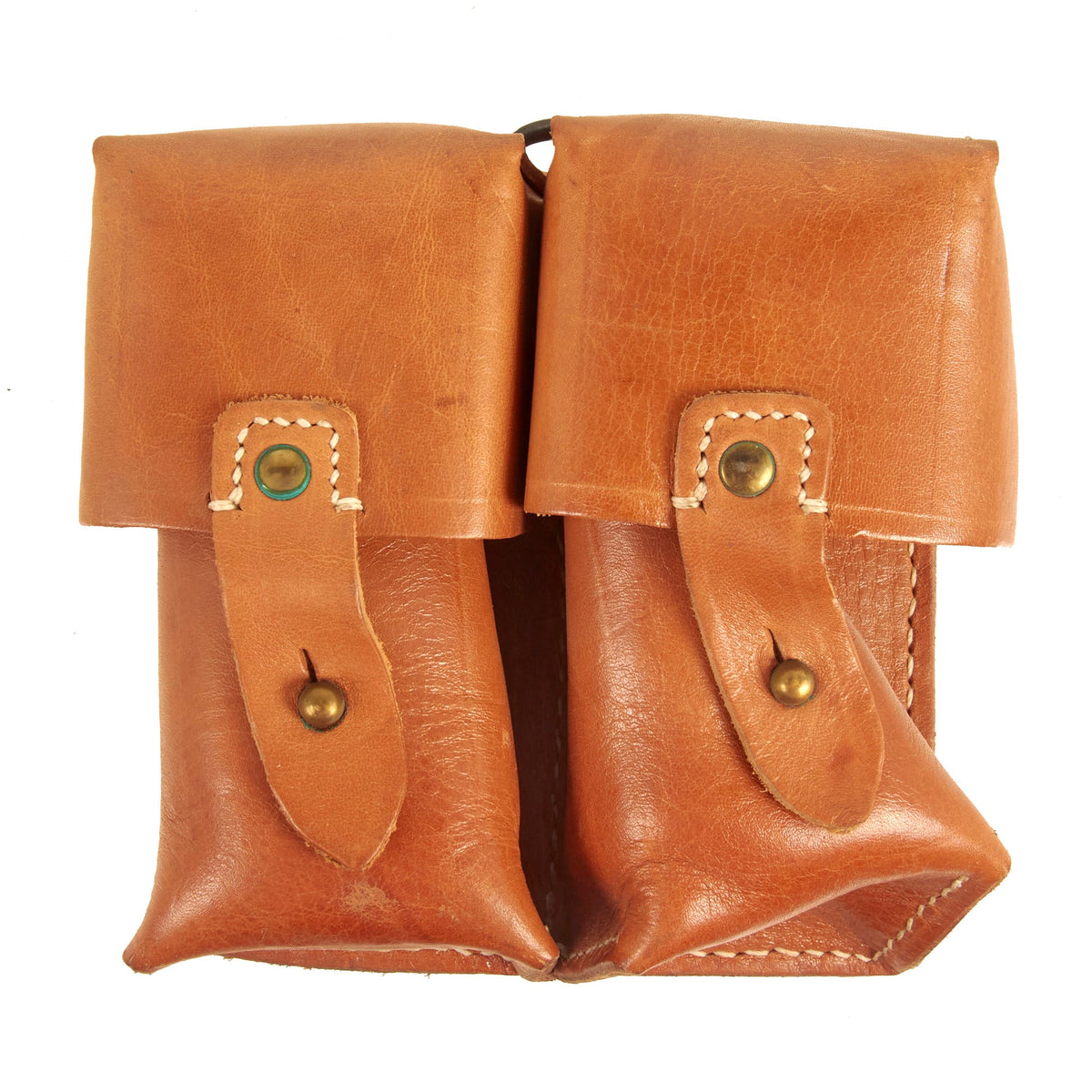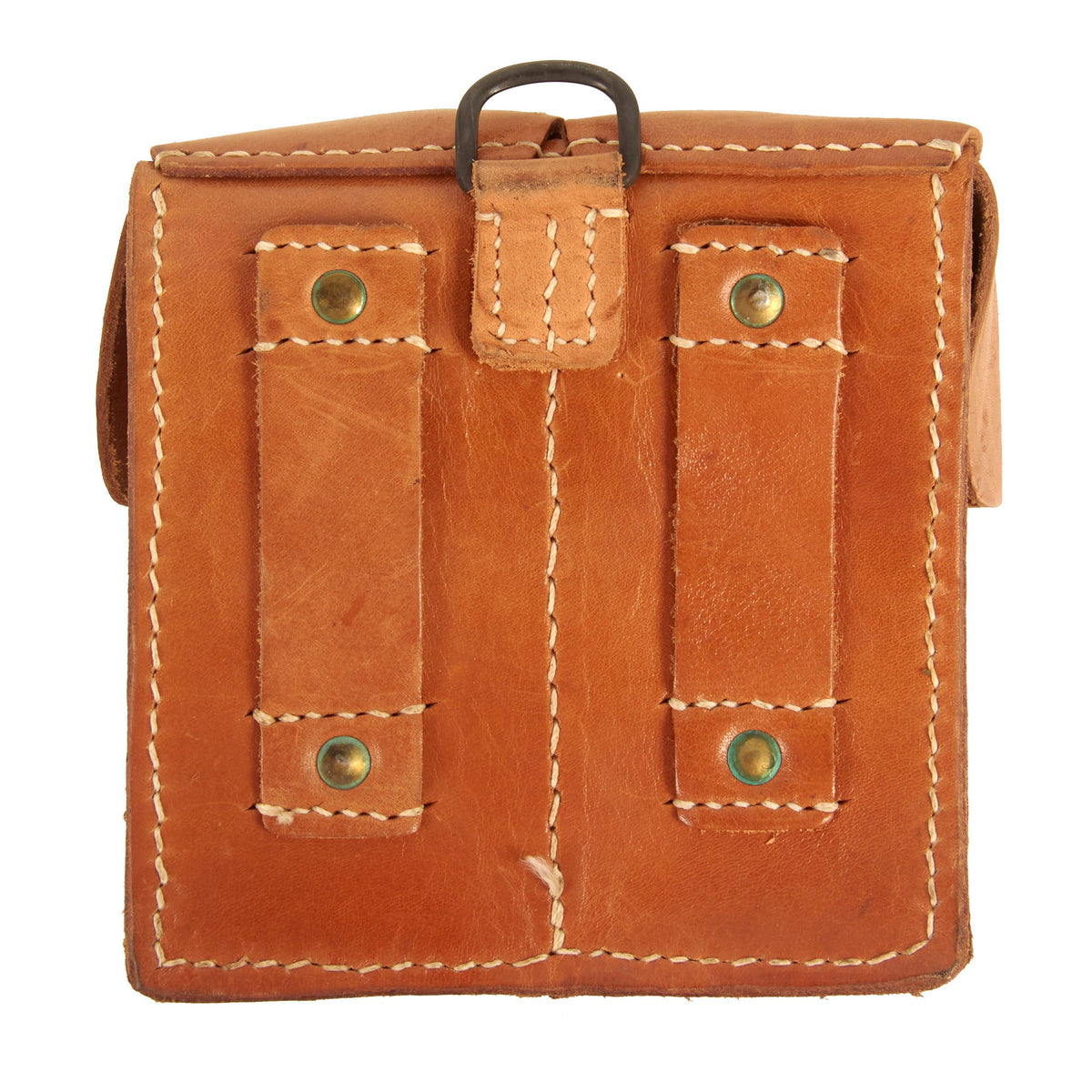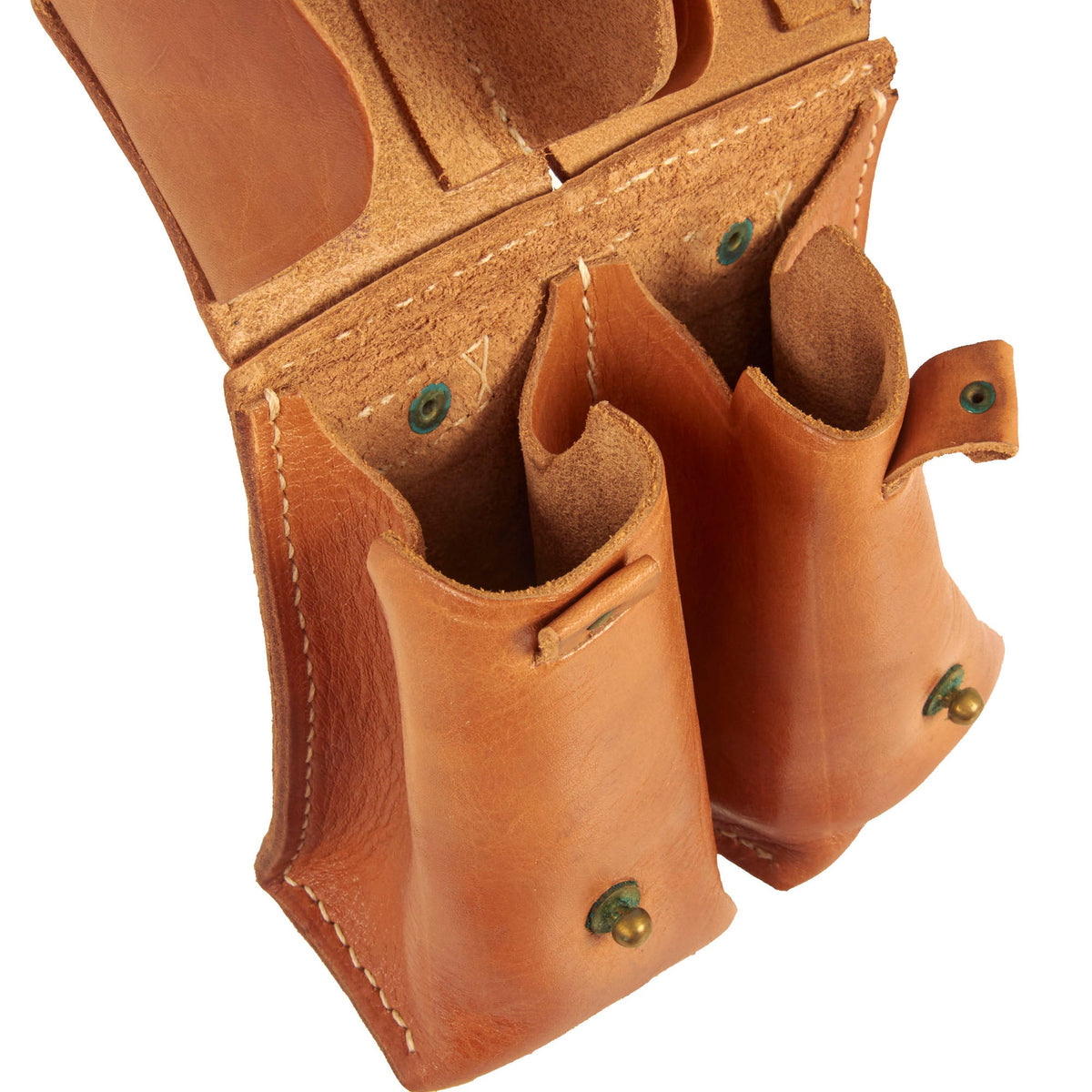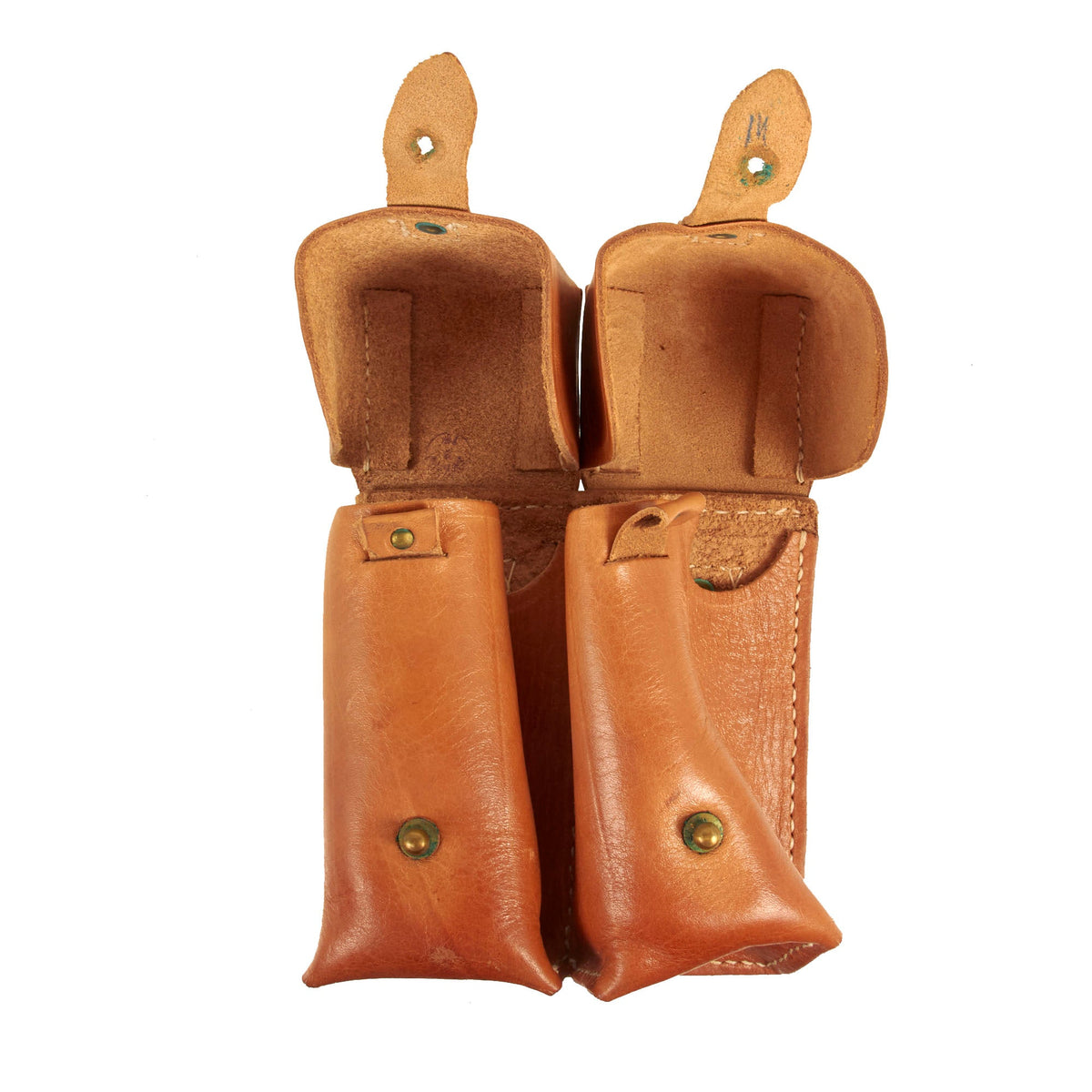Original Cold War Yugoslavian SKS Carbine Stripper Clip Leather Double Ammo Pouch – 7.62×39mm Original Items
$ 14,95 $ 8,97
Original Item: Offered in very good condition these are original Cold War Era Yugoslavian manufactured ammunition pouches for the SKS Self-loading Carbine. These lightweight weapons were produced in large numbers during the 1950s by the Soviet State arsenals, and then many more were produced later by other Communist States. This WWII style ammo pouch is an original item constructed from leather, with a front strap closures, 2″ belt loops, and a D-Ring on the back for Y-straps. Each pocket is designed to hold three stripper clips of 7.62×39mm ammunition, for a total of six, and feature release straps to helm push out the clips. They measure approximately 5″ x 5″ x 1″.
These are offered in very good condition, many showing little sign of use.
The SKS (Russian: Самозарядный карабин системы Симонова, romanized: Samozaryadny Karabin sistemy Simonova, 1945, self-loading carbine of (the) Simonov system, 1945) is a semi-automatic rifle designed by Soviet small arms designer Sergei Gavrilovich Simonov in 1945.
The SKS was first produced in the Soviet Union but was later widely exported and manufactured by various nations. Its distinguishing characteristics include a permanently attached folding bayonet and a hinged, fixed magazine. As the SKS lacked select-fire capability and its magazine was limited to ten rounds, it was rendered obsolete in the Soviet Armed Forces by the introduction of the AK-47 in the 1950s. Nevertheless, SKS carbines continued to see service with the Soviet Border Troops, Internal Troops, and second-line and reserve army units for decades.
The SKS was manufactured at Tula Arsenal from 1945 to 1958, and at the Izhevsk Arsenal from 1953 to 1954, resulting in a total Soviet production of about 2.7 million. Throughout the Cold War, millions of additional SKS carbines and their derivatives were also manufactured under license in the People’s Republic of China, as well as a number of countries allied with the Eastern Bloc. The SKS was exported in vast quantities and found favour with insurgent forces around the world as a light, handy weapon which was adequate for guerrilla warfare despite its conventional limitations. Beginning in 1988, millions were also sold on the civilian market in North America, where they remain popular as hunting and sporting rifles.
| Hand Select | No, Yes |
|---|
Fast Shipping with Professional Packaging
Thanks to our longstanding association with UPS FedEx DHL, and other major international carriers, we are able to provide a range of shipping options. Our warehouse staff is expertly trained and will wrap your products according to our exact and precise specifications. Prior to shipping, your goods will be thoroughly examined and securely secured. We ship to thousands clients each day across multiple countries. This shows how we're dedicated to be the largest retailer on the internet. Warehouses and distribution centres can be located throughout Europe as well as the USA.
Note: Orders with more than one item will be assigned a processing date depending on the item.
Before shipping before shipping, we'll conduct a thorough inspection of the items you have ordered. Today, the majority of orders will be delivered within 48 hours. The delivery time will be between 3-7 days.
Returns
The stock is dynamic and we cannot completely manage it because multiple stakeholders are involved, including our factory and warehouse. So the actual stock may alter at any time. It's possible that you may not receive your order once the order has been made.
Our policy is valid for a period of 30 days. If you don't receive the product within 30 days, we are not able to issue a refund or an exchange.
You can only return an item if it is unused and in the same state as the day you received it. You must have the item in its original packaging.
Related products
Uncategorized
Uncategorized
Uncategorized
Uncategorized
Uncategorized
Angolan Rebel 1970s era 60mm Inert Display Mortar from Angolan Civil War Original Items
Uncategorized
Uncategorized
Uncategorized
Armored Burgonet Helmet & Polearm from Scottish Castle Leith Hall Circa 1700 Original Items
Uncategorized
Uncategorized
Uncategorized
Uncategorized
Uncategorized
Band of Brothers ORIGINAL GERMAN WWII Le. F.H. 18 10.5cm ARTILLERY PIECE Original Items
Uncategorized
Uncategorized
Uncategorized
Uncategorized
Uncategorized
Armoured Fighting Vehicles of the World: AFVs of World War One (Hardcover Book) New Made Items
Uncategorized








































































